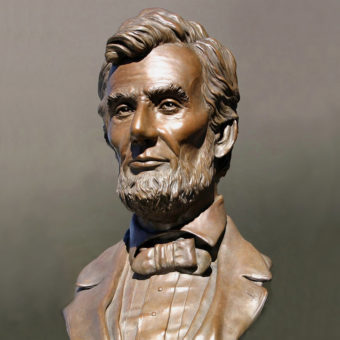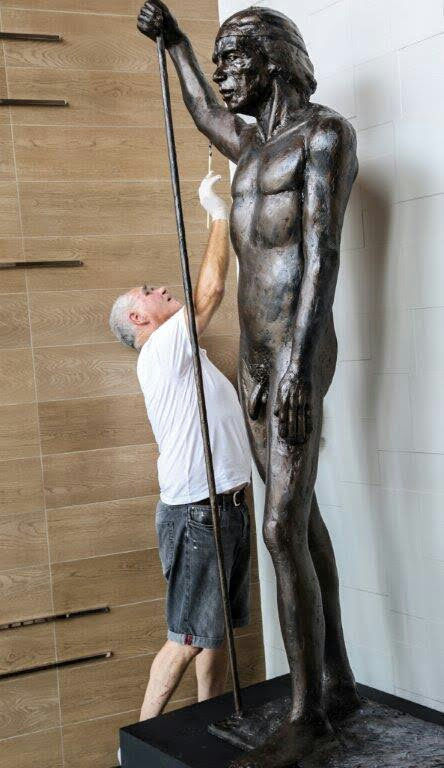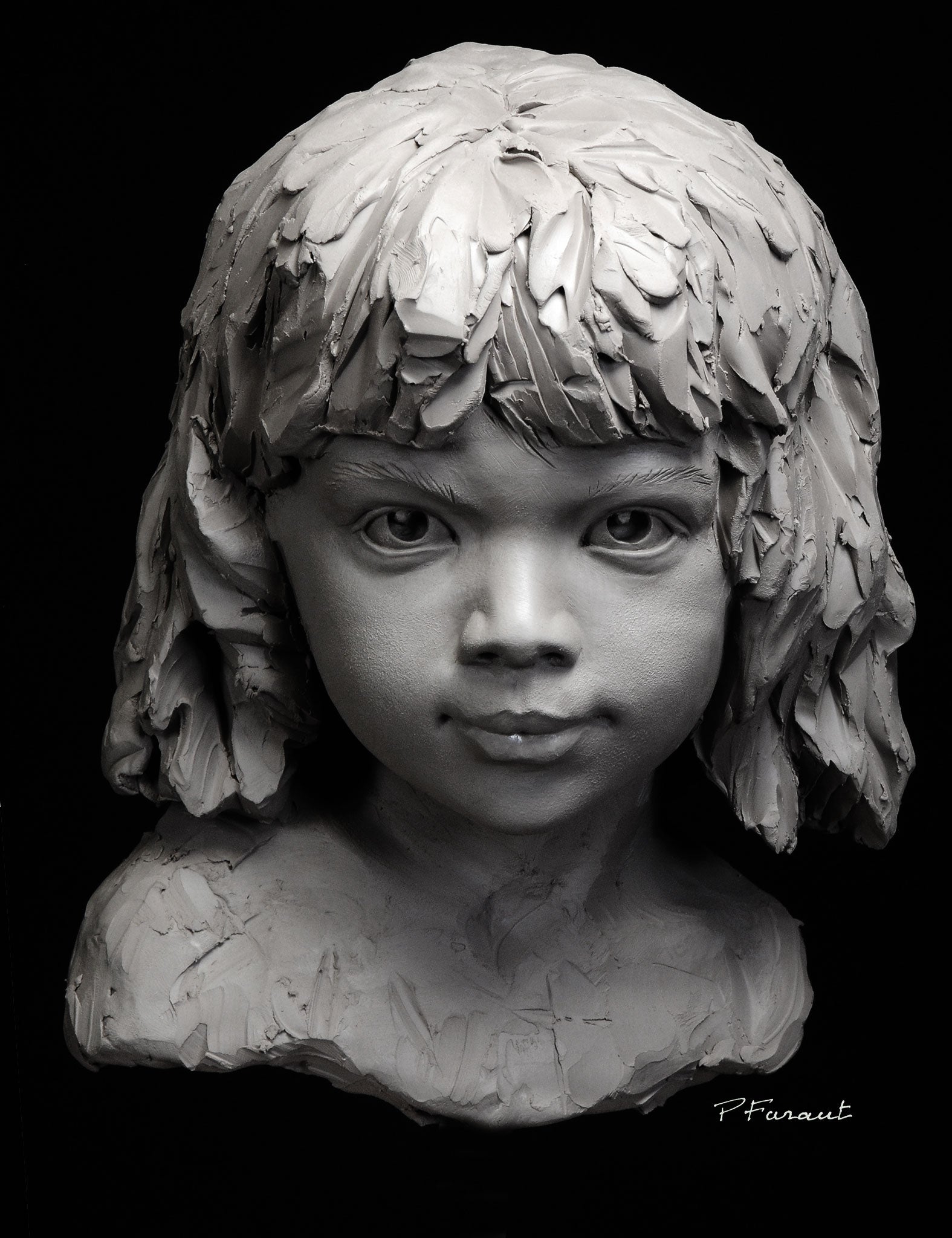Timeless Charm in Bronze: Introducing the Art of Bronze Sculptures
Wiki Article
Sculptures as an Expression of Human Emotions
Sculptures have long been respected as an effective medium for expressing the midsts and intricacies of human feelings. Through the skilled adjustment of composition, form, and structure, artists have the capability to record the abstract significance of pleasure, sadness, love, anger, and hope. These concrete masterpieces function as a graph of the variety of feelings that define the human experience. From the peaceful beauty of a grinning face to the raw intensity of a bent figure, sculptures supply a classic and unique home window right into the world of human feelings. With each sculpt stroke and clay molding, carvers take a breath life right into their creations, allowing us to resonate and link with the emotional stories they convey. In this exploration, we will explore the profound impact that sculptures have in revealing and stimulating human emotions.The Power of Recording Happiness and Joy
The integral power of sculptures lies in their capacity to catch and share the extensive feelings of joy and happiness with the skilled adjustment of type and product. Sculptures have been made use of throughout history as a way of revealing human emotions, and joy and joy are amongst one of the most typical feelings illustrated in these art types.Among the ways sculptures catch joy and joy is with the mindful selection and manipulation of kind. Musicians utilize different methods to produce sculptures that stimulate a sense of happiness, such as illustrating numbers in uplifting and dynamic presents, or making use of flowing contours and lines to develop a sense of movement and power. The option of material additionally plays a considerable role in conveying these feelings. Sculptors commonly use products that have a natural heat and vibrancy, such as bronze or marble, to enhance the cheerful and pleased high qualities of their job.
Additionally, the skilled usage of face expressions and motions in sculptures can efficiently share pleasure and joy. Artists diligently shape the smiles, giggling, and expressions of delight on the faces of their topics, bringing them to life and recording the significance of these emotions. The positioning of the body and the gestures depicted by the sculpture can additionally interact a sense of delight and happiness, whether it is a number with outstretched arms, dancing, or welcoming others.
Exploring the Midst of Despair and Grief
An exploration right into the midsts of sadness and grief can be attained through the expressive sculptures that record the significance of these extensive emotions. These sculptures work as a graph of the human experience, permitting audiences to get in touch with their own sensations of despair and sorrow on a much deeper level.With the skilled manipulation of structure, expression, and form, sculptors can share the complicated emotions connected with sadness and grief. The use of lengthened, hunched figures or bent, anguished expressions can elicit a feeling of misery and pain. The selection of products, such as chilly, rough stone or dark, weathered steel, can further enhance the mournful and melancholic mood of the sculptures.
In addition, the power of these sculptures depends on their capability to go beyond language obstacles - Equine Sculptures. Despite social or linguistic distinctions, the universal language of art allows individuals from varied histories to empathize and attach with the emotions represented in these sculptures. Robert C Hitchcock Sculptor. It is via this shared experience that a sense of catharsis and understanding can be attained
Unveiling the Complexity of Love and Need
Unveiling the complexities of love and yearning, sculptures use an extensive expedition right into the intricacy of love and wish. Via making use of different materials and methods, carvers have actually had the ability to capture the significance of these powerful feelings and convey them in concrete types. Love, with its many dimensions and subtleties, is a topic that has mesmerized musicians throughout background. From the tender embrace of a couple to the passionate entanglement of bodies, sculptures have actually illustrated the diverse expressions of love and need.One such example is Auguste Rodin's famous sculpture, "The Kiss." This work of art depicts 2 enthusiasts secured an intimate accept, their bodies entwined momentarily of extreme enthusiasm. The sculpture not only captures the physical link between the enthusiasts however likewise stimulates a deeper psychological bond. The intricate details and the skillful craftsmanship highlight the complexity of their love and desire.
Sculptures likewise check out the darker side of love and wish, unveiling the intricacies that can occur from these extreme feelings. Bronze Sculptures. Some sculptures illustrate the torture and misery that can go along with unrequited love or the harmful power of compulsive wish. These artworks function as a tip that love and desire can be both gorgeous and difficult, bringing joy and pain in equal action
Sharing Anger and Irritation Through Sculptures
With the representation of tense stances and bent types, sculptures express the strength of anger and frustration. Artists have long turned to the tool of sculpture to communicate these powerful emotions, utilizing numerous methods to catch the raw power and chaos associated with anger and aggravation.
One usual method is to illustrate figures in confrontational or hostile poses. The muscle stress and clenched fists of a sculpture can evoke a feeling of suppressed rage, while twisted arm or legs and contorted facial expressions can convey the frustration really felt by the subject. These physical symptoms of emotion work as an aesthetic representation of the internal turmoil experienced by individuals in moments of temper and frustration.
In addition, artists typically employ importance and allegory to improve the psychological impact of their sculptures. As an example, sharp, rugged sides or damaged forms can symbolize the devastating nature of rage, while hefty, difficult frameworks can represent the weight of stress. By incorporating these components into their job, artists have the ability to communicate the intensity and complexity of these feelings in a aesthetically striking and concrete manner.

Expressing Hope and Strength in Sculptural Form
Sculptures personifying hope and strength are a testament to the resolute spirit of the human experience. These artworks work as effective icons of optimism and stamina in the face of adversity. With the skillful manipulation of products, artists have the ability to capture the significance of hope and durability, developing sculptures that motivate and boost.
One example of a sculpture that personifies hope is "The Winged Success of Samothrace." This ancient Greek statue depicts a winged goddess standing atop a ship's prow, her garments billowing in the wind. The sculpture shows a feeling of accomplishment and decision, symbolizing the power of wish to conquer obstacles.

Sculptures that share hope and durability offer as pointers of the human capacity to sustain and thrive in the face of hardship. They motivate us to stand firm, to locate strength in ourselves, and to have belief in a brighter future. These artworks speak with the universal human experience, supplying solace and motivation to those who experience them.
Verdict
To conclude, sculptures serve as an effective medium for expressing a large range of human emotions (Robert C Hitchcock Sculptor). Via their artistic kind, they capture the significance of delight, unhappiness, hope, love, and anger. Equine Sculptures. By getting rid of personal pronouns, the focus remains on the global nature of these emotions and the ability of sculptures to share them in a long-lasting and tangible way. This highlights the relevance of sculptures as a way of expressing and understanding the intricacies of the human experience.Sculptures have long been respected as an effective tool for expressing the midsts and intricacies of human emotions. From the calm elegance of look at these guys a grinning face to the raw intensity of a bent figure, sculptures supply a distinct and ageless window right into the globe of human feelings. In this exploration, we will certainly dive into the profound effect that sculptures have in expressing and stimulating human feelings.
In final thought, sculptures offer as an effective medium for sharing a vast array of human emotions (Robert C Hitchcock Sculptor). By eliminating personal pronouns, the focus continues to be on the global nature of these emotions and the capacity of sculptures to share them in a tangible and long-lasting manner
Report this wiki page